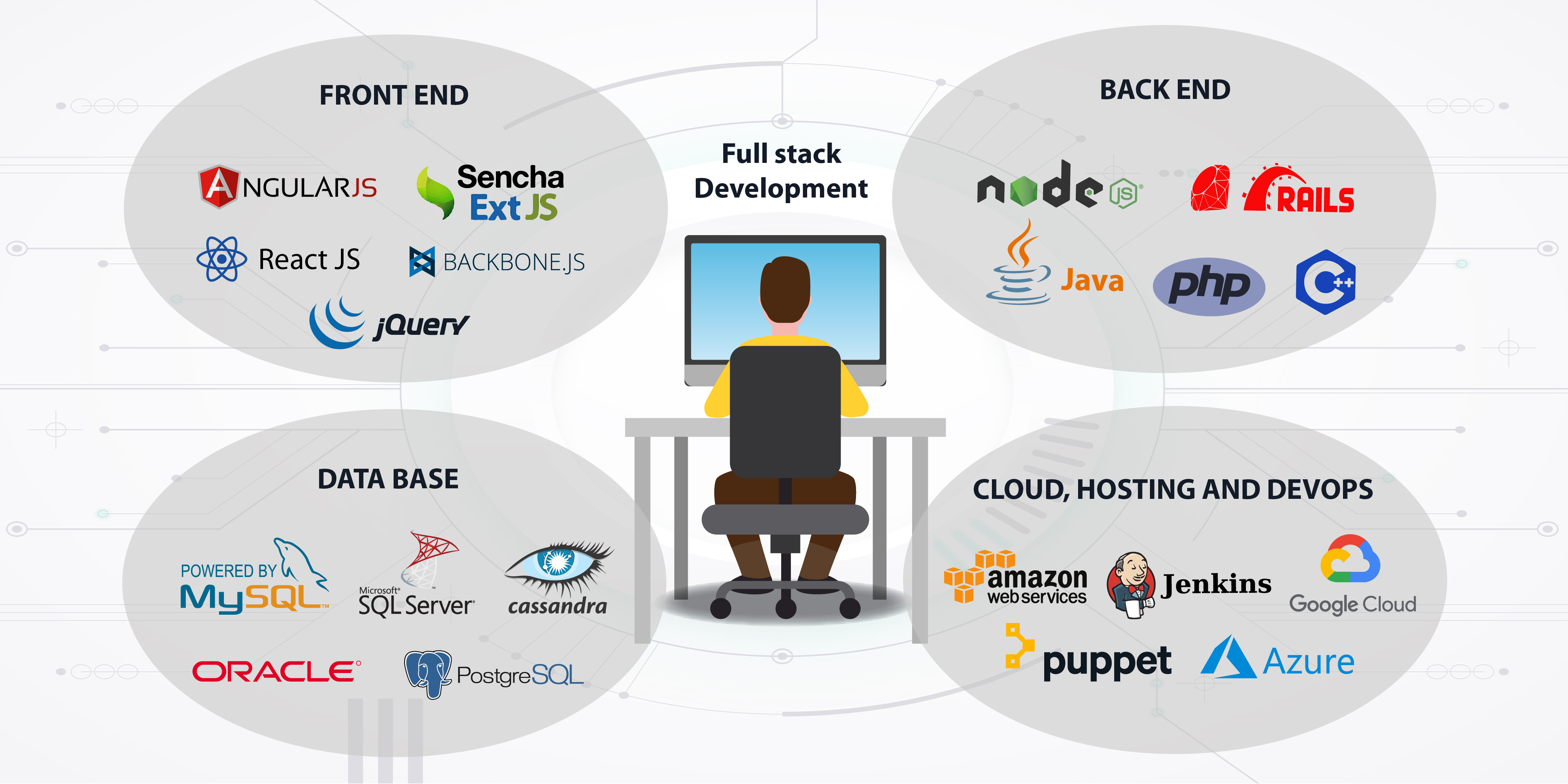CGKY News Hub
Your go-to source for the latest insights and trends.
Coding a Full-Stack Feast: Satisfy Your Dev Appetite
Dive into full-stack coding tips and delicious projects that will satisfy your developer cravings. Start your feast today!
Understanding Full-Stack Development: A Beginner's Guide
Full-stack development refers to the comprehensive skill set needed to develop both the front end and back end of web applications. This includes working on the user interface (UI), which is what users interact with, as well as the server side, which manages database interactions, user authentication, and application logic. Aspiring full-stack developers typically need to become proficient in a variety of programming languages and frameworks, including HTML, CSS, JavaScript, and server-side languages like Python or Node.js. By understanding both sides of development, developers can create seamless user experiences and mitigate issues that may arise during the development process.
As a beginner in full-stack development, it is crucial to grasp the fundamental concepts of both front-end and back-end technologies. Here are some essential areas to focus on:
- HTML/CSS: The backbone of any web page, these languages structure and style the content.
- JavaScript: A key programming language that adds interactivity to web pages.
- Frontend Frameworks: Such as React or Angular, which help streamline the development process.
- Backend Frameworks: Like Express or Django, essential for building the server-side functionalities.
- Databases: Familiarity with SQL or NoSQL databases for storing and retrieving application data.
By mastering these skills, beginners can effectively build dynamic and robust web applications.

Top 10 Essential Tools for Full-Stack Developers
Full-stack developers are the backbone of modern web development, requiring a diverse set of skills and tools to handle both the front-end and back-end of applications. Here are the Top 10 Essential Tools for Full-Stack Developers that can help streamline workflows and enhance productivity:
- Visual Studio Code - A powerful and versatile code editor that supports various programming languages, making it a favorite among developers.
- Git - An essential version control system that allows developers to track changes and collaborate efficiently.
- Node.js - Enables JavaScript to be used on the server side, allowing developers to build scalable applications.
- React - A popular front-end library for building user interfaces, making it easier to manage state and create dynamic components.
- Express.js - A fast web framework for Node.js that simplifies the creation of server-side applications.
- MongoDB - A NoSQL database that provides flexibility and scalability for data storage.
- Postman - A powerful API testing tool that allows developers to easily test and document APIs.
- Docker - A containerization platform that helps developers create, deploy, and run applications in isolated environments.
- Figma - A popular design tool that facilitates collaboration between developers and designers.
- Webpack - A module bundler that helps manage and optimize front-end assets for a smoother performance.
How to Build a Full-Stack Application from Scratch: Step-by-Step Tutorial
Building a full-stack application from scratch can be a rewarding journey that enhances your development skills. To start, you should choose your technology stack, which typically includes a front-end framework, a back-end server, and a database. Popular choices for the front-end include React and Vue.js, while Node.js and Django are excellent options for the back-end. For the database, you might consider MongoDB or PostgreSQL. Once you have selected your stack, set up your development environment by installing the necessary software and tools, such as code editors and package managers.
Next, you can begin building your application in a step-by-step manner. Start with the front-end by creating the user interfaces and ensuring they are responsive and user-friendly. Once the front-end is in place, move on to the back-end, where you'll build the server and implement API endpoints for data communication. Finally, integrate your database to store and retrieve data as needed. Throughout the process, make sure to test each component thoroughly to ensure everything works seamlessly together, and don’t forget to optimize your application for search engines to maximize visibility.